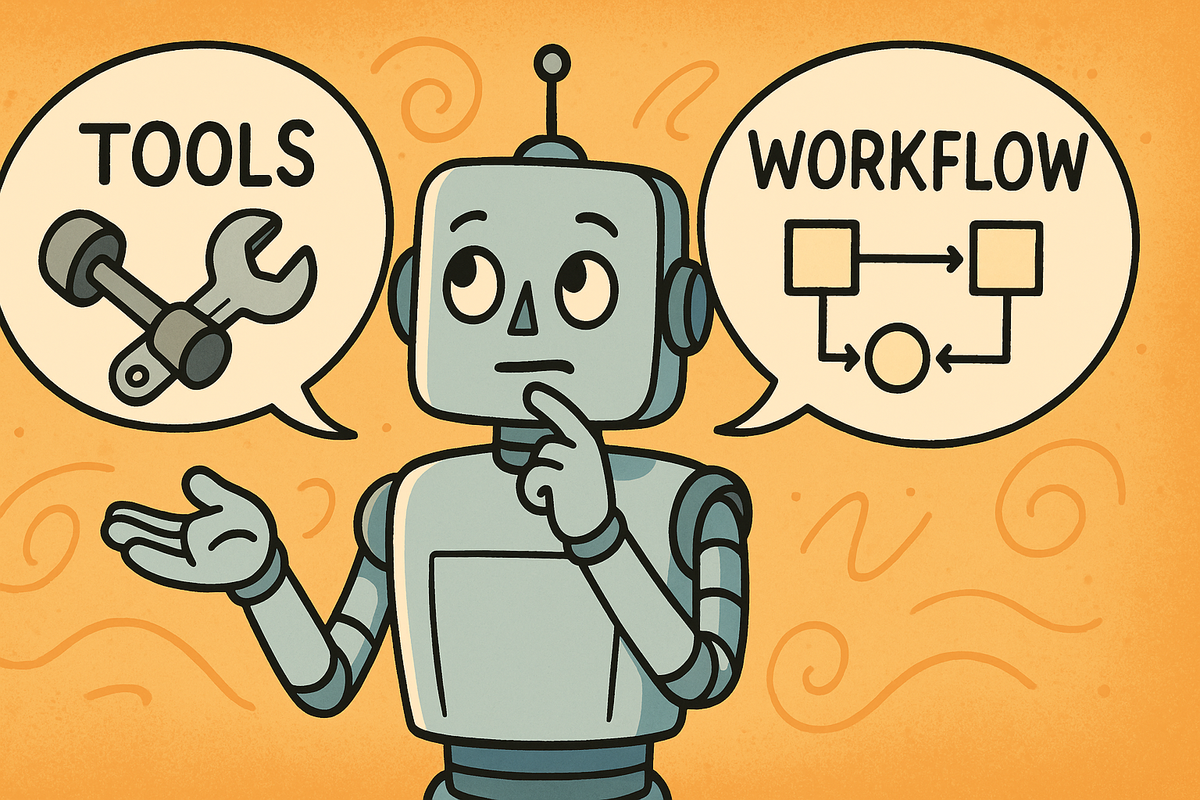Workflows vs Tool-Use: Choosing the Right AI Agent Architecture
The debate between workflow-based and tool-using agent architectures isn't just a technical one. It reflects two sharply different views of how intelligent agents should behave—and how they should be built.

For leaders responsible for the governance and viability of AI agents, this choice is about more than software: it’s about trust, risk, and financial value.
Two Patterns, Two Philosophies
Workflow-first frameworks like LangGraph, CrewAI, n8n and Lindy.ai promote programmed, graph-based execution. These systems are clear, deterministic, and transparent. Each step is tightly scoped, and failures can be predicted, caught, and retried. They extend traditional software engineering to LLM-based agents, emphasizing control, testability, and reliability.
Tool-using models, like those from OpenAI, Anthropic and Auto-GPT rely on generative reasoning to dynamically choose tools, interpret APIs, and adapt on the fly. They allow faster iteration and broader scope but can lack clear boundaries or fallback strategies. This style prioritizes flexibility and emergent capability.
These aren’t mutually exclusive. Many real-world agents blend structured workflows with selective tool use. And as models improve, the balance may continue to shift in favor of tool-use for more tasks. But for now, the trade-offs are real.
So how do these patterns stack up when evaluated through the lens of a Good Agent?
1. Financial Viability
A Good Agent delivers tangible financial value. That means predictable costs and measurable returns. Workflow-based models are often better suited here. Their structured execution allows easier budgeting, debugging, and optimization.
However, entry and setup costs often favor tool-use. OpenAI-style agents enable quick prototyping and low-friction development. To make workflow-based models competitive, teams must invest in shared libraries, orchestration frameworks, and reusability across projects.
2. Accuracy
The number one risk with generative AI is inaccuracy. Tool-using agents may hallucinate or misunderstand ambiguous steps, especially in longer reasoning chains. Workflow agents can enforce validation and decision checkpoints at each step, limiting the blast radius of mistakes.
To improve tool-use accuracy, teams must adopt strong prompt engineering, monitoring, and feedback loops. Emerging techniques like self-verification and external scoring functions are helping close the gap—but they require dedicated effort.
3. Governance
Governance frameworks depend on auditability, fallback strategies, and transparency. Workflow systems make it easier to see what happened, why it happened, and what data was used. This makes them well-aligned with governance, compliance, and operational oversight.
Tool-use architectures require more work to constrain and monitor. Wrappers, observability layers, and action constraints are essential to bring them up to standard. Without them, risks grow faster than capability.
Why This Matters Now
Enterprises are embedding AI agents into high-stakes workflows: support desks, claims processing, financial advice, and more. The architecture you choose affects not just your speed to market—but your exposure to risk.
Workflow-first models like LangGraph offer lower risk, greater testability, and clearer ROI. Tool-using agents like OpenAI's are faster to prototype and more adaptive. In many cases, a hybrid approach is best: workflows for safety and control, tool-use for flexibility and scale.
The Good Agents Company helps you tell the difference—and build agents that are not just clever, but Good.
For a conversation about how agent architecture impacts financial viability and governance, get in touch.
